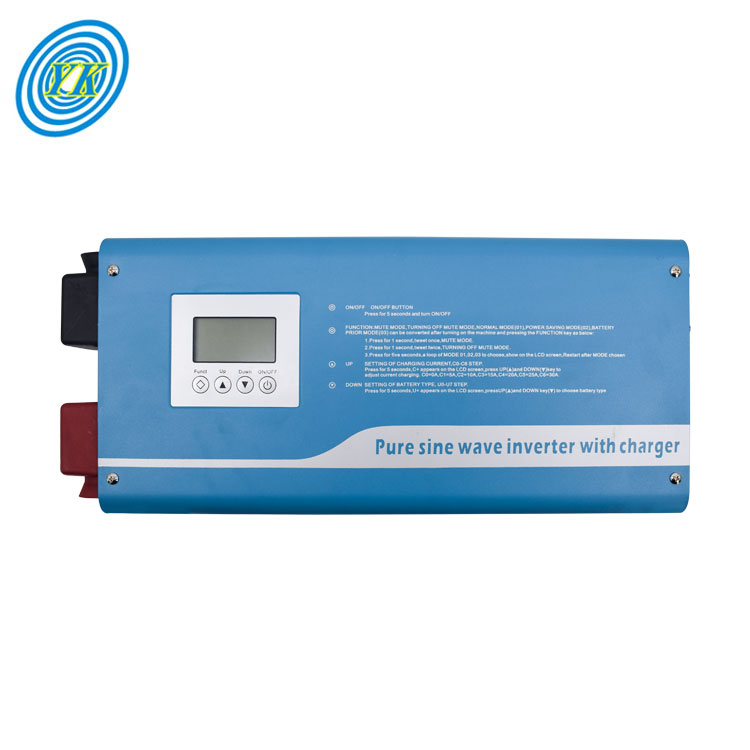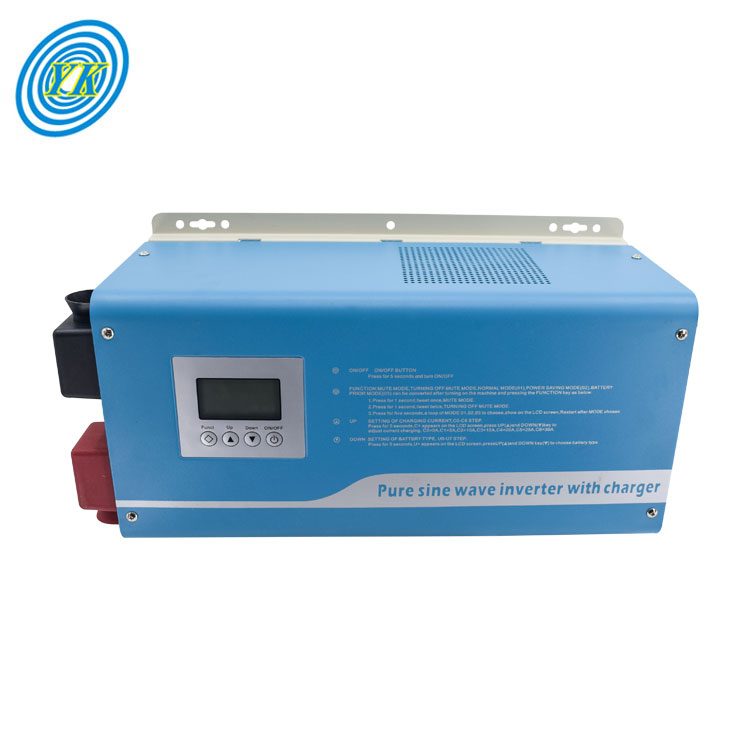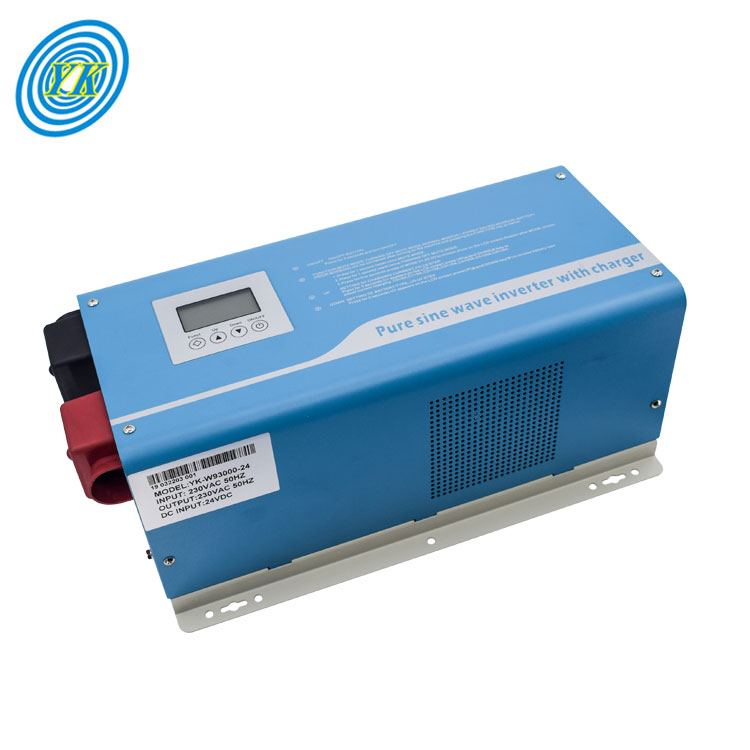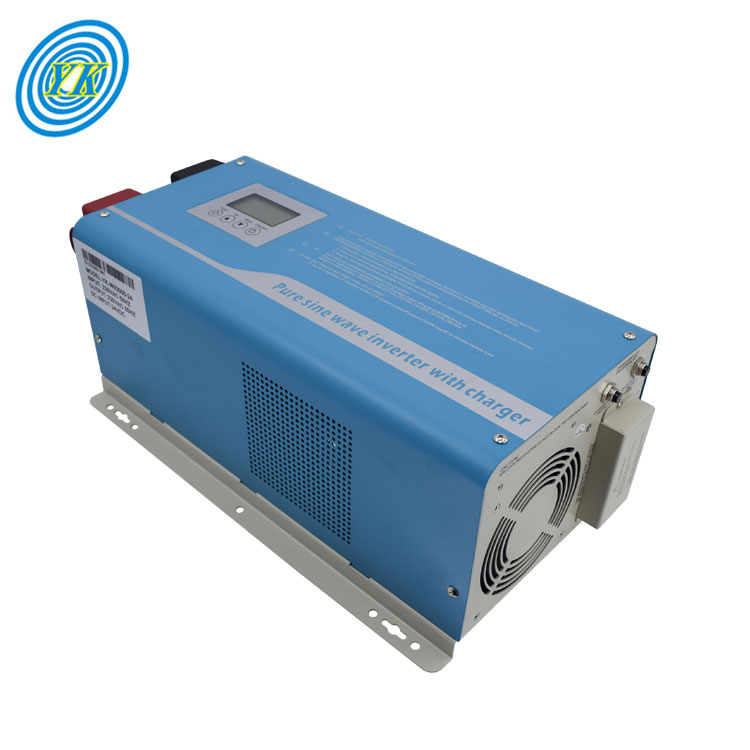News
Exploring the Innovative Landscape of Low Frequency Inverters with Chargers: Technology, Applications, and Market Insights
Click: 683 Date: 03/04/2024 3::26::53 PM
Exploring the Innovative Landscape of Low Frequency Inverters with Chargers: Technology, Applications, and Market Insights
Inverter technology, particularly the low-frequency variety, plays a pivotal role in converting direct current (DC) power into alternating current (AC) power, enabling the operation of household appliances and backup power systems in off-grid conditions. This conversion is essential for utilizing solar power or other renewable energy sources, as these systems typically output DC power.
Low-frequency inverters operate at a frequency of 50 or 60 Hz, matching the standard frequency of the AC electricity grid. This characteristic is crucial for providing power to devices that are designed to operate on the grid's frequency, ensuring compatibility and optimal performance.
Efficiency is a key aspect of inverter technology. High-frequency inverters, while efficient and compact, may struggle with sudden power surges due to their lower surge capacity. In contrast, low-frequency inverters are designed to handle higher power demands more effectively, making them more suitable for applications requiring a stable and reliable power supply.
The size and weight of inverters are also significant considerations. High-frequency inverters are compact and lightweight, making them ideal for portable applications. However, low-frequency inverters, while larger, offer superior performance and reliability, especially in environments where stability and continuous power are critical.
In summary, the choice between low-frequency and high-frequency inverters depends on the specific requirements of the application, including power demand, compatibility with devices, and the need for portability versus reliability.
Low frequency inverters are versatile tools that find applications across various sectors due to their ability to convert DC power into AC power, making them suitable for a wide range of uses. Here's a reimagined overview of their applications, avoiding direct quotes from the sources:
Tool Battery Charging: These inverters are commonly used for charging batteries in tools, providing the necessary AC power for tool batteries, which are typically DC
Powering Small Appliances: Low frequency inverters are ideal for running small appliances that require AC power, such as refrigerators, air conditioners, and other household items
A/V and Computer Usage: They are particularly useful in environments where AC power is needed for audio-visual equipment and computers, providing a reliable power source
Industrial Applications: Beyond household use, low frequency inverters are also employed in industrial settings, such as in the operation of pumps, motors, and other high-torque tools, where their robust design and efficiency make them suitable for long-term use
Renewable Energy Systems: In the realm of renewable energy, low frequency inverters play a crucial role in converting DC power from solar panels or wind turbines into AC power for home use or grid connection, facilitating the integration of renewable energy sources into the electrical grid.
These applications highlight the versatility and adaptability of low frequency inverters, making them indispensable in a range of settings from everyday household use to more complex industrial and renewable energy applications.
Charger systems and battery management are integral components in the modern landscape of power technology, especially in the context of renewable energy and electric vehicles. A charger system is designed to safely and efficiently charge a battery, ensuring it operates within its safe operating area. This involves monitoring the battery's state, including its voltage, temperature, and charge level, to prevent overcharging or overheating. The charger system may also include features for balancing the charge across cells in a battery pack, ensuring all cells are charged evenly to prolong battery life and optimize performance.
Battery management systems (BMS) are electronic systems that control and monitor the operation of a battery. They are crucial for ensuring the battery is used safely and efficiently, protecting it from conditions that could lead to damage or failure. A BMS typically includes functionalities such as monitoring cell voltages and temperatures, managing the charging process, and balancing the charge across cells in a battery pack. It may also include features for battery authentication, ensuring the BMS is connected to an authorized battery pack, and protection against transient events, such as sudden voltage spikes that could damage the battery or the BMS itself.
In essence, charger systems and battery management are about ensuring that batteries are used safely and efficiently, balancing the need for power with the importance of protecting the battery's health and longevity. This involves careful monitoring and control of the battery's state, including its voltage, temperature, and charge level, as well as managing the charging process to ensure it is carried out safely and effectively.
Power quality and safety features are crucial components of low frequency inverters with chargers, ensuring reliable operation and protecting both the inverter and the devices it powers. These features can be categorized into several key areas:
Voltage Stability: Inverters must maintain a stable output voltage to prevent fluctuations that could damage connected devices or lead to performance issues
Harmonic Reduction: Inverters often include harmonic reduction technology to minimize distortion in the power output, which can interfere with electronic devices and cause inefficiencies
Protection Mechanisms: Safety features such as overvoltage, overcurrent, and short circuit protection are essential to prevent damage to the inverter and the connected devices
Ground Fault Protection: This feature detects and isolates faults, protecting both the inverter and the electrical system from ground faults
Soft Start and Soft Stop: These features gradually increase or decrease power output, reducing stress on the inverter and the connected devices, and minimizing wear and tear
Insulation Monitoring: Inverters often include insulation monitoring to detect signs of wear in the insulation, allowing for timely repairs to prevent failures
Temperature Control: Inverters may include cooling systems to manage heat generation, which is a common issue with high-power devices. Proper temperature control helps in maintaining the inverter's performance and lifespan
Data Protection: Inverters with chargers may also include data protection features to secure sensitive information, such as user settings or usage data
In summary, power quality and safety features in low frequency inverters with chargers are designed to ensure reliable power supply and protect against potential hazards, enhancing the overall performance and longevity of the system.
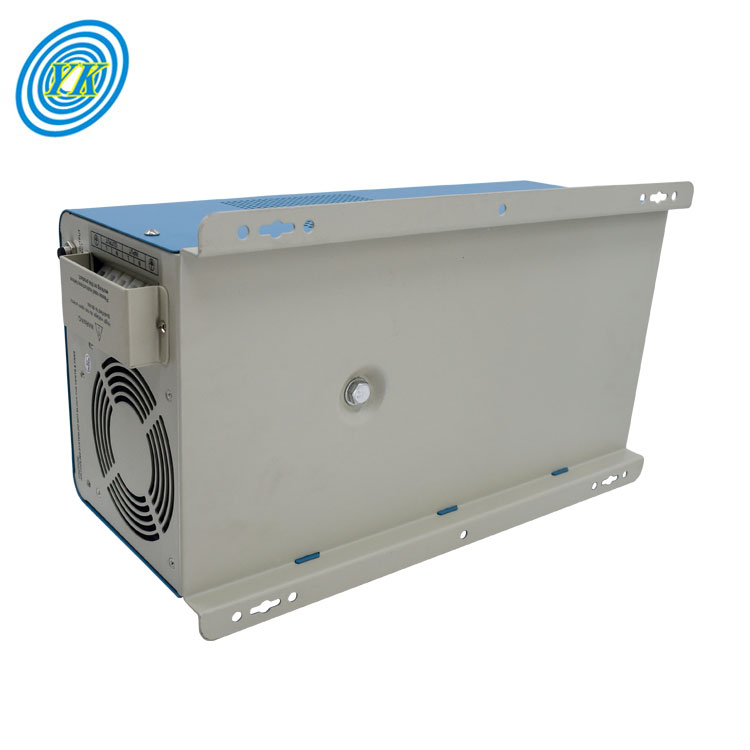
Market Trends and Standards
The global market for low frequency inverters with chargers is experiencing significant growth, particularly in regions like the Asia-Pacific. This expansion is largely driven by the increasing demand for solar energy, which necessitates the use of efficient and reliable inverters to convert DC power from solar panels to AC power suitable for household use or grid connection.
A key trend in the market is the dominance of the central inverters segment, which is expected to continue its growth trajectory. Central inverters are crucial for utility-scale applications, requiring precise voltage and frequency matching to the local electric grid. Manufacturers have responded to the diversity of grid standards by offering customizable parameters, with three-phase inverters being the most common. Innovations such as the 1+X central modular inverter, which can be combined into larger units and features interfaces for energy storage systems, reflect the market's move towards more versatile and efficient solutions.
Government initiatives and commitments to renewable energy sources, such as the Paris Agreement, are also driving market growth. For instance, India's ambitious target of achieving 175 GW of renewable energy capacity by 2022, with a significant portion allocated to solar energy, underscores the importance of inverters in facilitating the integration of renewable sources into the grid.
Standards play a critical role in ensuring the compatibility and efficiency of inverter systems. With the grid's increasing penetration of renewables and alternative forms of energy, there's a growing need for standards that can accommodate the high penetration of inverters. This includes revisions to existing standards like IEEE 1547™ and IEEE 2800™, which aim to enhance procedures for managing and correcting systems in the presence of high inverter penetration. These standards are essential for ensuring grid stability and reliability as the energy landscape evolves.
In summary, the market for low frequency inverters with chargers is poised for continued growth, driven by the rising demand for solar energy, the need for efficient energy conversion at utility scales, and the evolving standards to support the integration of renewable energy sources into the grid.
